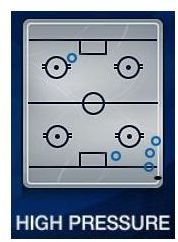Computer Sports Games - NHL 09 - Quick Play Defensive Strategy
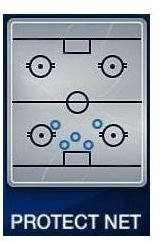
Quick play strategies
As was stated in the Offensive Quick Play strategies article, beside the regular offensive and defensive tactics, which are generally used for “set plays” (off the faceoff), there are also quick play tactics. Those tactics define the attitude of your players in the NHL09 game as well as their deployment in transition plays – such as quick breaks and 3-on-2 situations. The quick play tactics musn’t be overlooked as many games are decided by successful transitions from defense to attack and vice-versa. Defensive quick play strategy defines the positioning of your players and the amount of risk you are willing to take on quick plays.
There are 5 levels of defensive quick play tactics: Protect Net, Contain Puck, Normal, Puck Side Attack, and High Pressure. Here is a brief explanation of each:
Protect Net
Protect Net is the most conservative scheme among the defensive quick play tactics. Your players will retreat toward the blue line as soon as the opponent gets the puck. When the play reaches your zone the players will collapse in front of goal, trying to prevent close-range shots and rebounds. This is a good tactic to use for slowing the tempo of the game and executing as many “set plays” as possible.
Contain Puck
When using contain Puck tactics, your players (all 5) will position themselves between the goal and the puck. This means a quick retreat toward the blue line when the opponent takes control of the puck and small amount of pressure applied by one or two front line players. When the puck is in your zone, the players will form a “line” in front of a goal – covering as much area as possible, but allowing long-range shots and concentrating on blocking shots and picking up rebounds. If your goalie is not too good at controlling rebounds, this might be the right tactic for you – if you are not 2-3 goals behind: this and the previous tacticts are conservative and best at preserving leads, not getting the puck back for you to score.
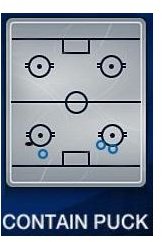
Normal
A combination of zone and one-on-one defense, the Normal Defensive Quick Plays strategy allows you to apply a certain amount of pressure on the player with the puck – especially in your own zone. It also allows counterattacking opportunities, especially if your opponent is attcking aggressively. This might be a good tactic to extend the lead in the last period against the Quick Plays offensive All Out Attack strategy.
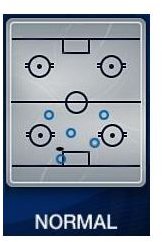
Puck Side Attack
With Puck Side Attack tactics, you are applying severe pressure on the opponent – three or even four players try to win the puck on the strong side, with only two covering the free zones. When the puck is outside your zone the opponent is pushed towards the boards, cutting the passing opportunities. When using this strategy, you should watch out for quick one-touch passes and shots, as well as rebounds. Remember, if the opponents succeeds in alternating sides – you are in real danger of conceding a good goal scoring chance.
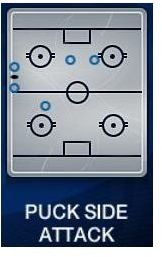
High Pressure
It seems that you have got nothing to loose. Or maybe your goalie is superb. Looking for quick breakaways, this tactic includes attacking the puck and the opponent players all over the ice. Moreover, when the puck is locked in the corner of your zone (opponent’s possession!) – one player will immediately move forward, looking for a breakaway goal. If you are good in scoring on the breakaway this might be a good tactic. But against a skilled goalie – Puck Side attack might be a better choice.
